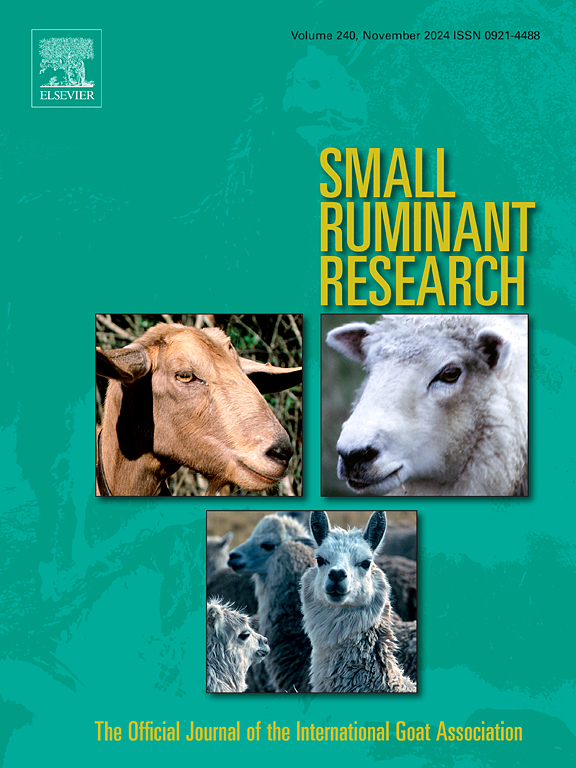在公用事业规模的太阳能中利用绵羊放牧的植被管理:美国的农业生态见解和现有知识差距
IF 1.6
3区 农林科学
Q2 AGRICULTURE, DAIRY & ANIMAL SCIENCE
引用次数: 0
摘要
在全球范围内,光伏(PV)系统的发展存在共同的主题。捕获阳光用于能源生产需要大量的土地使用足迹,从而导致限制太阳能站点的发展。美国各地不同的地区正在利用不同的人口密度、气候和饲料生产潜力进行光伏发展。能源使用量预计将随着工业和住宅需求的增加而增长。在国际上,美国的能源使用量排名第二,是不断增长的能源需求的主要贡献者。随着公用事业规模的太阳能装置在美国不断扩大,特别是在牧场和牧场,对可持续植被管理的需求已经成为一个关键的运营考虑因素。放牧是一种可行的解决方案,通过控制植被生长而不影响光伏电池板的效率,既能带来经济效益,又能带来生态效益。这篇综述综合了目前关于羊放牧在太阳能场址整合的研究,通常被称为“太阳能放牧”,重点是农业生态相互作用、运营挑战和产业增长潜力。本文还讨论了影响植被管理的关键因素,包括区域气候变率、牧草生产潜力和物种特异性放牧行为。此外,还探讨了太阳放牧在防火、增加生物多样性和改善土壤健康方面的作用。尽管这一双重用途战略前景光明,但仍存在一些知识空白,特别是关于这些太阳能基地对本地植物群落的长期生态影响、最佳羊放养密度以及饲料生产和羊营养之间的平衡。目前太阳能发展的趋势与美国绵羊数量的下降形成了对比,这引起了人们对美国绵羊产业能否满足日益增长的太阳能放牧需求的担忧。此外,太阳能放牧的整合给动物健康和福利带来了新的挑战,特别是在寄生虫浓度增加或获得水和补充饲料有限的地区。这篇综述强调需要进一步研究适应性管理实践,以及基础设施和产业支持的发展,以确保美国不同地区太阳能放牧的可持续性本文章由计算机程序翻译,如有差异,请以英文原文为准。
Vegetation management utilizing sheep grazing within utility-scale solar: Agro-ecological insights and existing knowledge gaps in the United States
Common themes exist in the development of photovoltaic (PV) systems, globally. Capturing sunlight for energy production requires a significant land-use footprint, thus resulting in limitations that prohibit development of solar sites. Diverse regions across the U.S. are being utilized for PV development with varying population density, climate, and forage production potential. Energy usage is expected to grow with increased demand from industrial and residential segments. Internationally, the U.S. ranks second in energy usage and is the primary contributor to the growing energy demand. As utility-scale solar installations continue to expand across the U.S., and specifically pastures and rangelands, the need for sustainable vegetation management has become a critical operational consideration. Grazing with sheep presents a viable solution, offering both economic and ecological benefits by controlling vegetation growth without compromising (PV) panel efficiency. This review synthesizes current research on the integration of sheep grazing within solar sites, often referred to as "solar grazing," with a focus on the agro-ecological interactions, operational challenges, and potential for industry growth. This review also examines the critical factors influencing vegetation management, including regional climate variability, forage production potential, and species-specific grazing behaviors. Additionally, the role of solar grazing in fire mitigation, biodiversity enhancement, and soil health improvement is explored. Despite the promise of this dual-use strategy, several knowledge gaps persist, particularly regarding the long-term ecological impacts on native plant communities, optimal sheep stocking densities, and the balance between forage production and sheep nutrition within these solar sites. Current trends in solar development are contrasted with the declining sheep population in the U.S., raising concerns about whether the American sheep industry can meet the growing demand for solar grazing. Moreover, the integration of solar grazing introduces new challenges in animal health and welfare, particularly in regions with increased parasite concentrations or limited access to water and supplemental feed. This review highlights the need for further research on adaptive management practices, as well as the development of infrastructure and industry support to ensure the sustainability of solar grazing in diverse regions of the U.S.
求助全文
通过发布文献求助,成功后即可免费获取论文全文。
去求助
来源期刊

Small Ruminant Research
农林科学-奶制品与动物科学
CiteScore
3.10
自引率
11.10%
发文量
210
审稿时长
12.5 weeks
期刊介绍:
Small Ruminant Research publishes original, basic and applied research articles, technical notes, and review articles on research relating to goats, sheep, deer, the New World camelids llama, alpaca, vicuna and guanaco, and the Old World camels.
Topics covered include nutrition, physiology, anatomy, genetics, microbiology, ethology, product technology, socio-economics, management, sustainability and environment, veterinary medicine and husbandry engineering.
 求助内容:
求助内容: 应助结果提醒方式:
应助结果提醒方式:


